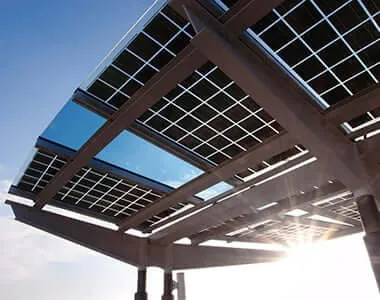Comparing Energy Conversion Efficiency of Monocrystalline and Polycrystalline Solar Panels
The Efficiency of Monocrystalline and Polycrystalline Solar Panels
As the world increasingly turns toward renewable energy sources, solar power has emerged as a prominent player in the energy landscape. Among the various technologies available, solar panels made from monocrystalline and polycrystalline silicon dominate the market. Both types have their unique characteristics and performance metrics, primarily influenced by their efficiency levels. In this article, we will explore the efficiency of monocrystalline and polycrystalline solar panels, examining the key factors that differentiate them and their implications for consumers and the environment.
Understanding Solar Panel Types
Monocrystalline Solar Panels These panels are made from single-crystal silicon, which is why they are often recognized by their uniform dark color and rounded edges. The manufacturing process involves slicing thin wafers from a large, cylindrical crystal of silicon. This method produces higher purity silicon, leading to greater efficiency in energy conversion. Monocrystalline panels are known to have efficiency ratings typically ranging from 15% to over 22%, with some cutting-edge products even exceeding this range. Their higher efficiency means they can generate more electricity from the same amount of sunlight compared to their polycrystalline counterparts.
Polycrystalline Solar Panels These panels are constructed from multiple silicon crystals melted together. They typically have a speckled blue appearance due to the multiple crystal structures. While they are generally less expensive to produce than monocrystalline panels, their efficiency tends to be lower, often ranging from 13% to 17%. This difference is mainly due to the presence of multiple crystal boundaries, which create inefficiencies in energy transfer.
Factors Affecting Efficiency
1. Material Quality The purity of silicon affects how well the panel can convert sunlight into electricity. Monocrystalline panels benefit from higher purity, leading to fewer defects and better performance.
2. Temperature Coefficient Solar panel efficiency is affected by temperature. Monocrystalline panels typically have a better temperature coefficient, meaning they perform better in higher temperatures compared to polycrystalline panels. This characteristic can be a crucial advantage in hotter climates.
efficiency of monocrystalline and polycrystalline solar panels

3. Space Requirements Due to their higher efficiency, monocrystalline panels require less space to produce the same amount of energy as polycrystalline panels. This is particularly important for residential installations where roof space may be limited.
4. Cost Considerations While monocrystalline panels provide better efficiency, they are also more expensive than polycrystalline panels. For consumers on a budget, polycrystalline panels may offer a more cost-effective solution, albeit with a trade-off in efficiency and space requirements.
Real-World Applications and Considerations
The choice between monocrystalline and polycrystalline solar panels often hinges on individual needs and circumstances. For homeowners with limited roof space, opting for more efficient monocrystalline panels could be the most sensible decision. This would allow for maximum energy generation without compromising available space. On the other hand, larger installations, such as solar farms, may benefit from the lower cost of polycrystalline panels, despite the need for more land to achieve comparable energy outputs.
Furthermore, considering the trend towards increased energy efficiency and the technological advancements in solar technology, both monocrystalline and polycrystalline panels continue to improve. As manufacturing processes become more efficient, the cost gap between the two types may narrow, making high-performing solar energy solutions more accessible.
Conclusion
In summary, the efficiency of solar panels is a key factor when considering solar energy systems, and both monocrystalline and polycrystalline panels have their own strengths and weaknesses. Monocrystalline panels lead the way in efficiency and space utilization, making them ideal for residential use where every square foot counts. Conversely, polycrystalline panels offer a budget-friendly option with a slightly lower efficiency, suitable for larger installations with ample space. As the solar industry evolves, continued innovations are likely to further enhance the performance of both types, contributing to a more sustainable energy future. Ultimately, the choice between monocrystalline and polycrystalline solar panels should be informed by individual requirements, budget, and long-term energy goals.
-
Unlocking Energy Freedom with the Off Grid Solar InverterNewsJun.06,2025
-
Unlock More Solar Power with a High-Efficiency Bifacial Solar PanelNewsJun.06,2025
-
Power Your Future with High-Efficiency Monocrystalline Solar PanelsNewsJun.06,2025
-
Next-Gen Solar Power Starts with Micro Solar InvertersNewsJun.06,2025
-
Harnessing Peak Efficiency with the On Grid Solar InverterNewsJun.06,2025
-
Discover Unmatched Efficiency with the Latest String Solar InverterNewsJun.06,2025







